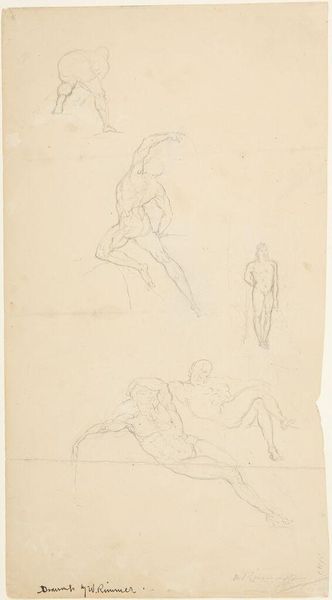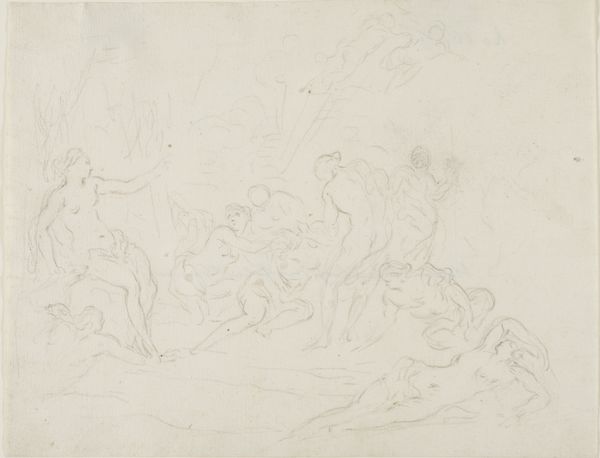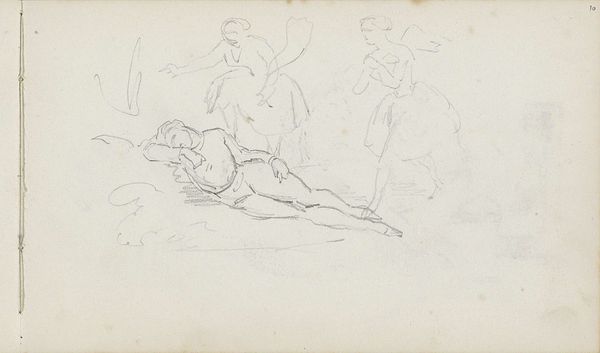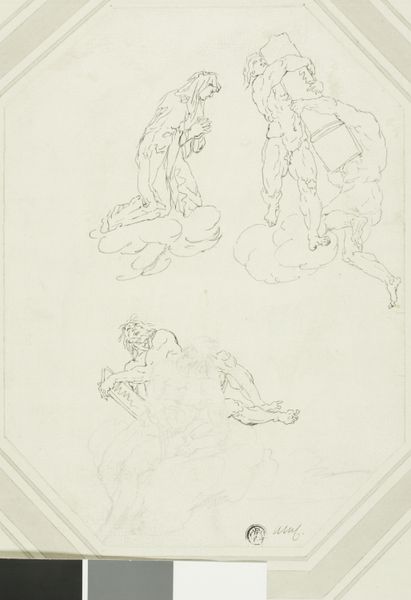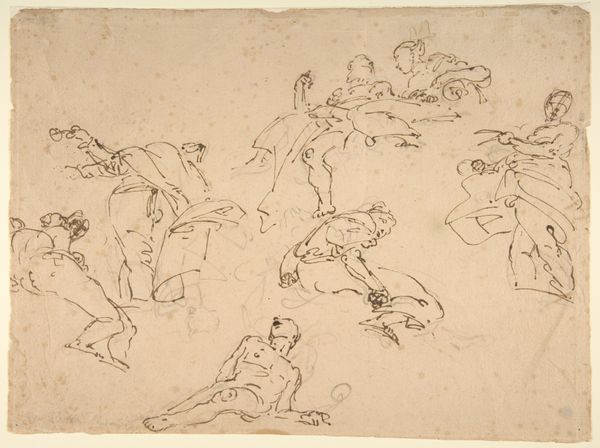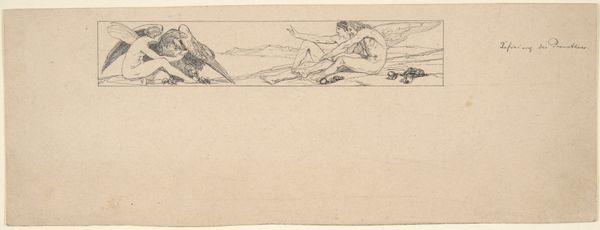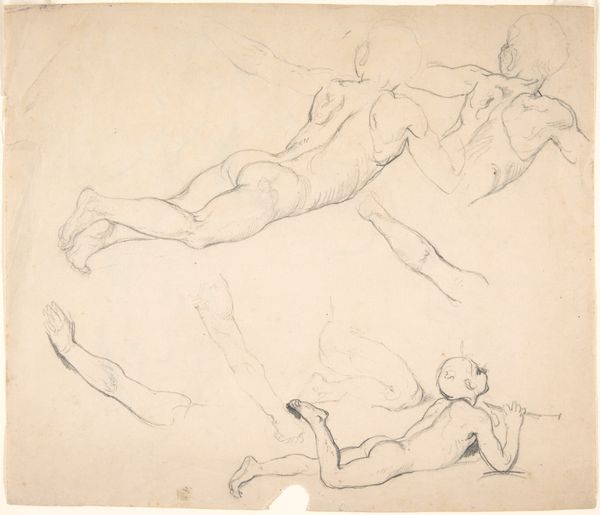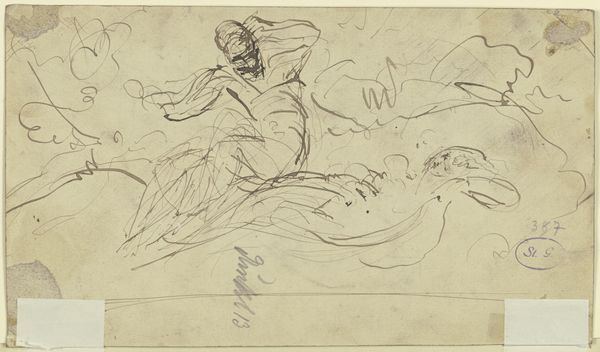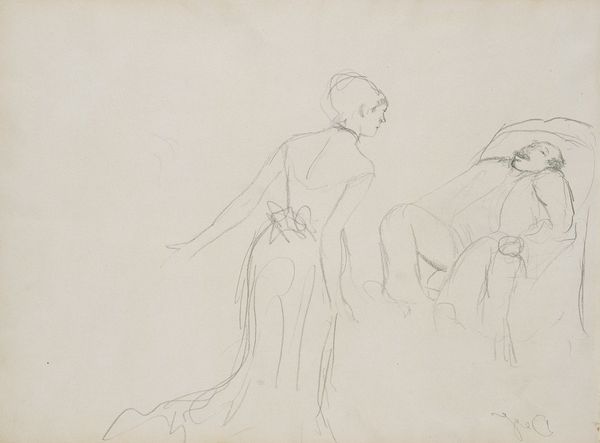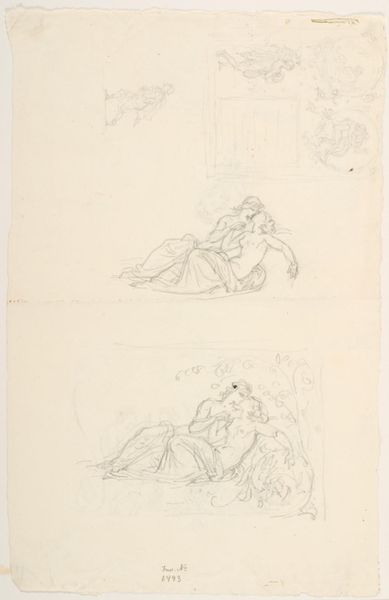
Forskellige skitser bl.a. arkitekturfragment og siddende nøgen kvinde 1860
0:00
0:00
drawing, ink, pencil
#
portrait
#
drawing
#
ink drawing
#
classical-realism
#
figuration
#
ink
#
pencil
#
genre-painting
#
academic-art
#
italian-renaissance
#
nude
Dimensions: 286 mm (height) x 235 mm (width) (bladmaal)
Editor: This drawing, "Forskellige skitser bl.a. arkitekturfragment og siddende nøgen kvinde," dating back to 1860, is by Lorenz Frølich, rendered in ink and pencil. The composition, filled with fragmented figures and architectural elements, feels dreamlike and allusive. What stands out to you when you view this work? Curator: It evokes the visual language of memory itself. Consider the figure seated, gazing upward—that recurring pose throughout art history represents contemplation, searching. The juxtaposition with architectural fragments whispers of lost civilizations, a cultural memory deeply embedded within us. Editor: I hadn't thought of it that way. What do you mean by 'cultural memory?' Curator: These are symbols—the nude, classical architecture—that have carried meaning across generations. They become signifiers loaded with cultural and historical associations, continually reshaped by subsequent viewers and artists. The dreamlike quality softens and diffuses the loaded symbols and metaphors here, leaving them open for reinterpretation. What might this scene be, in the context of its era, if not Neoclassical? Editor: So, you are saying that even in its unfinished state, the drawing engages with history and shared cultural understanding. Perhaps Frølich is hinting at grand narratives while simultaneously questioning their solidity through these fleeting sketches? Curator: Precisely! And look closely—are the figures idealized, or do they possess a certain vulnerability? Consider how the artist utilizes line. Is it a celebration or a deconstruction? These are symbols imbued with shared values, yet always filtered through the artist’s unique lens, always morphing. Editor: That makes the unfinished quality seem even more significant; it invites us into that process of reinterpretation, right? I see now a conversation, both intimate and universal, unfolding on the page. Curator: Yes, the drawing performs, embodying dialogue. It beckons us, whispering across the centuries, and urging reflection. We may choose to accept or deny the meaning, and then redefine it. The past always becomes the present, in these works.
Comments
No comments
Be the first to comment and join the conversation on the ultimate creative platform.


